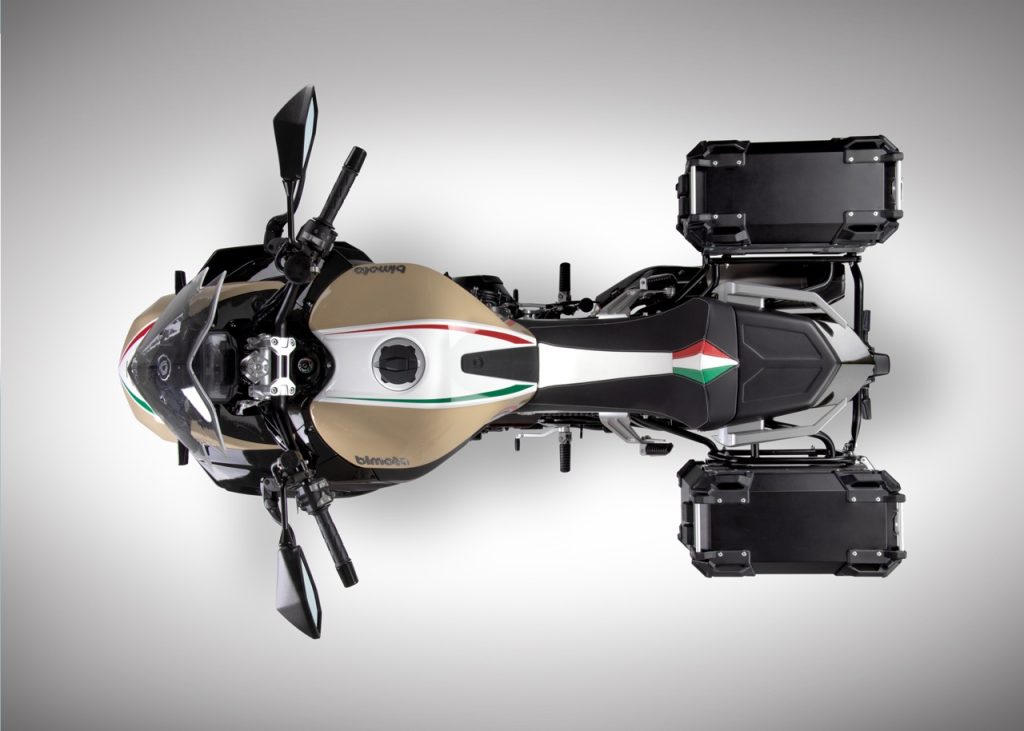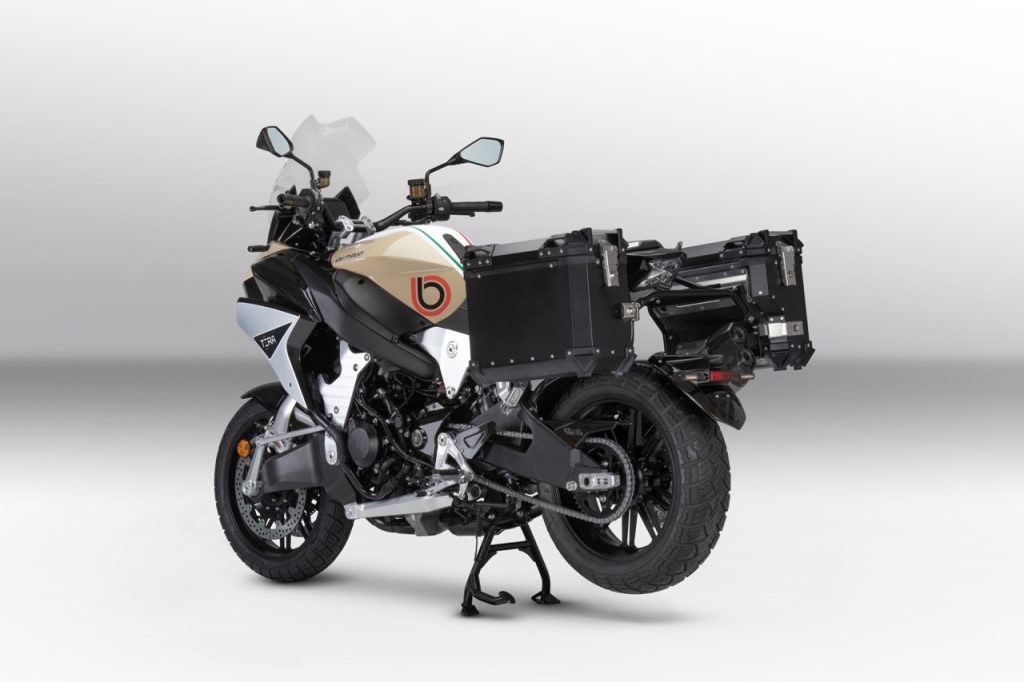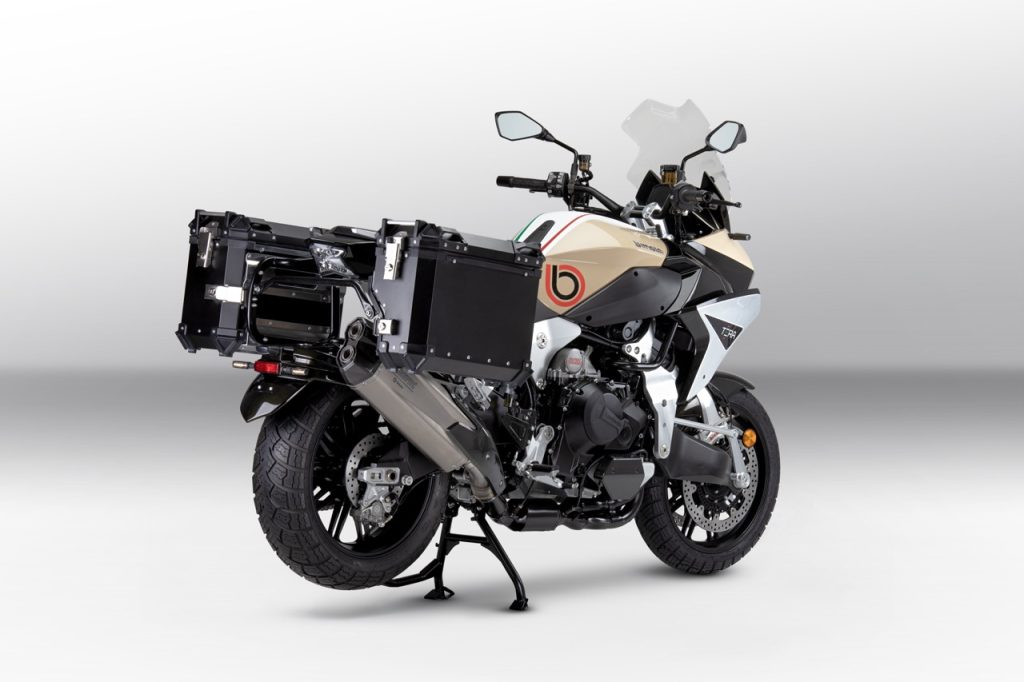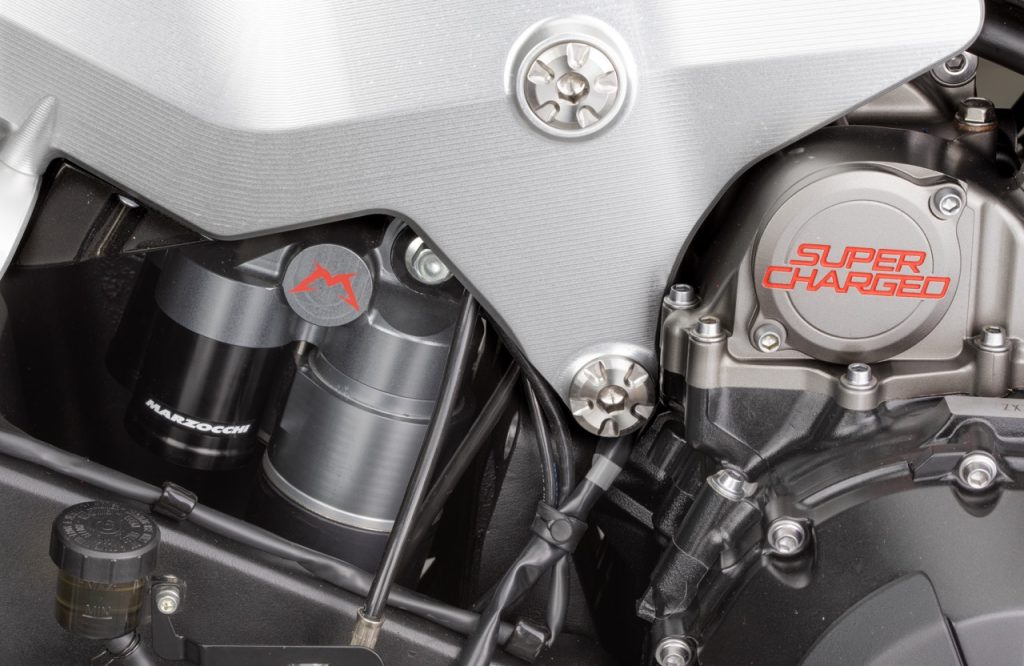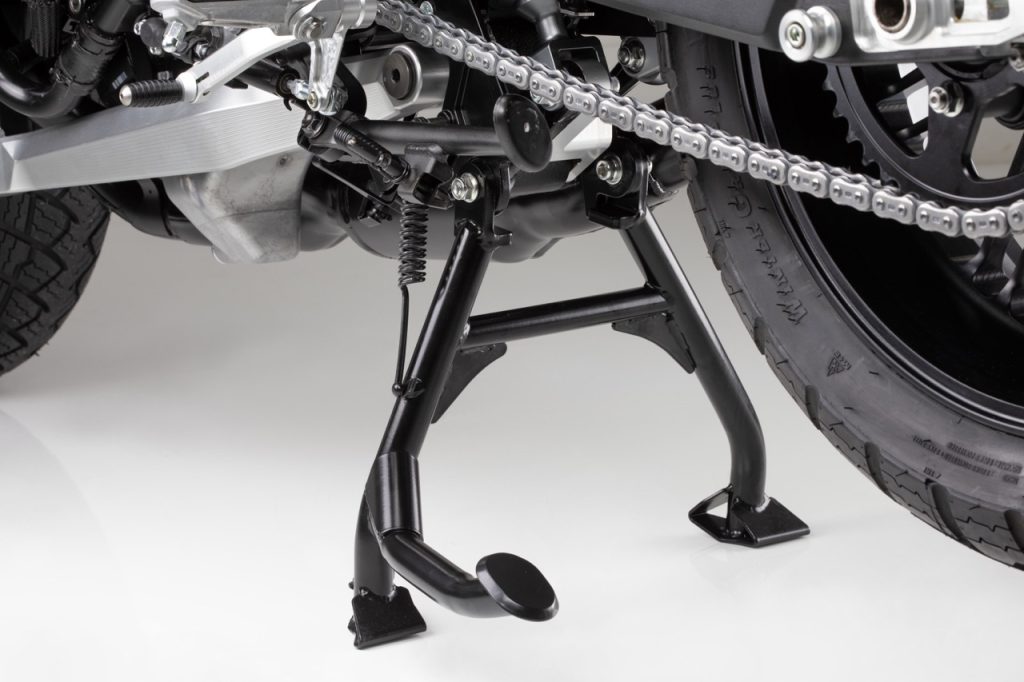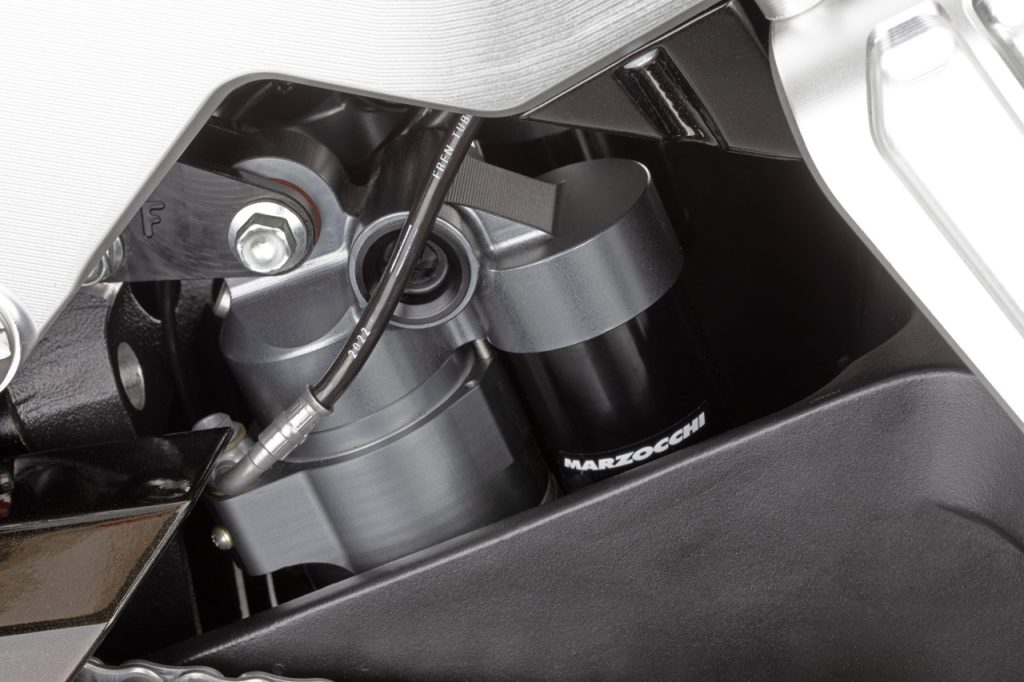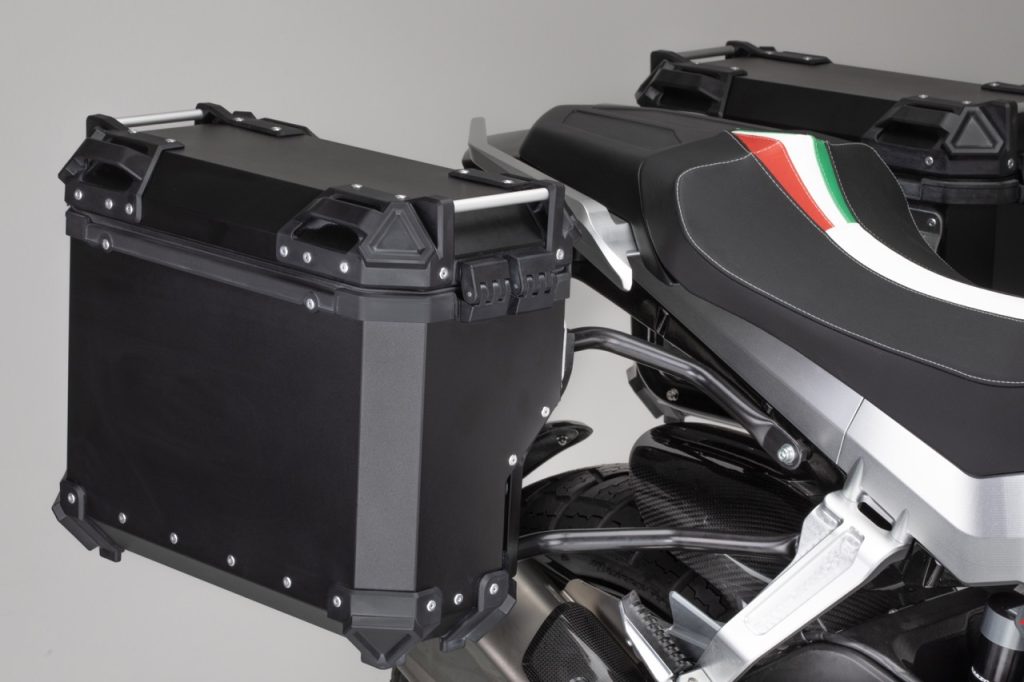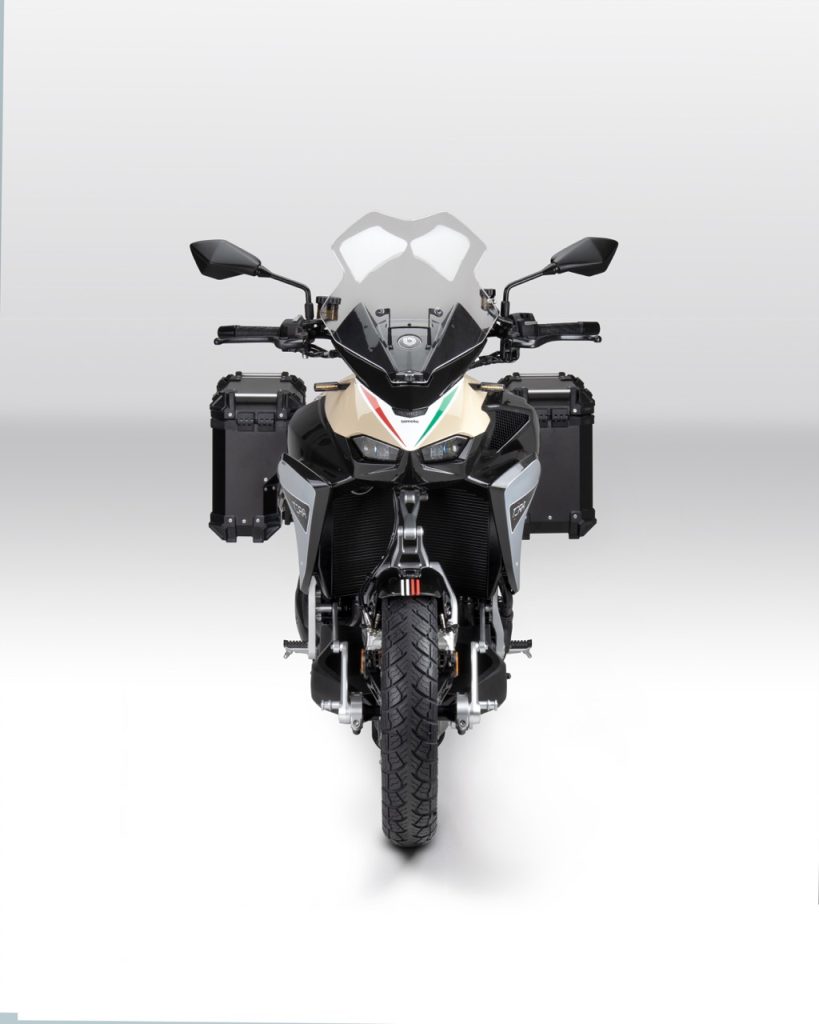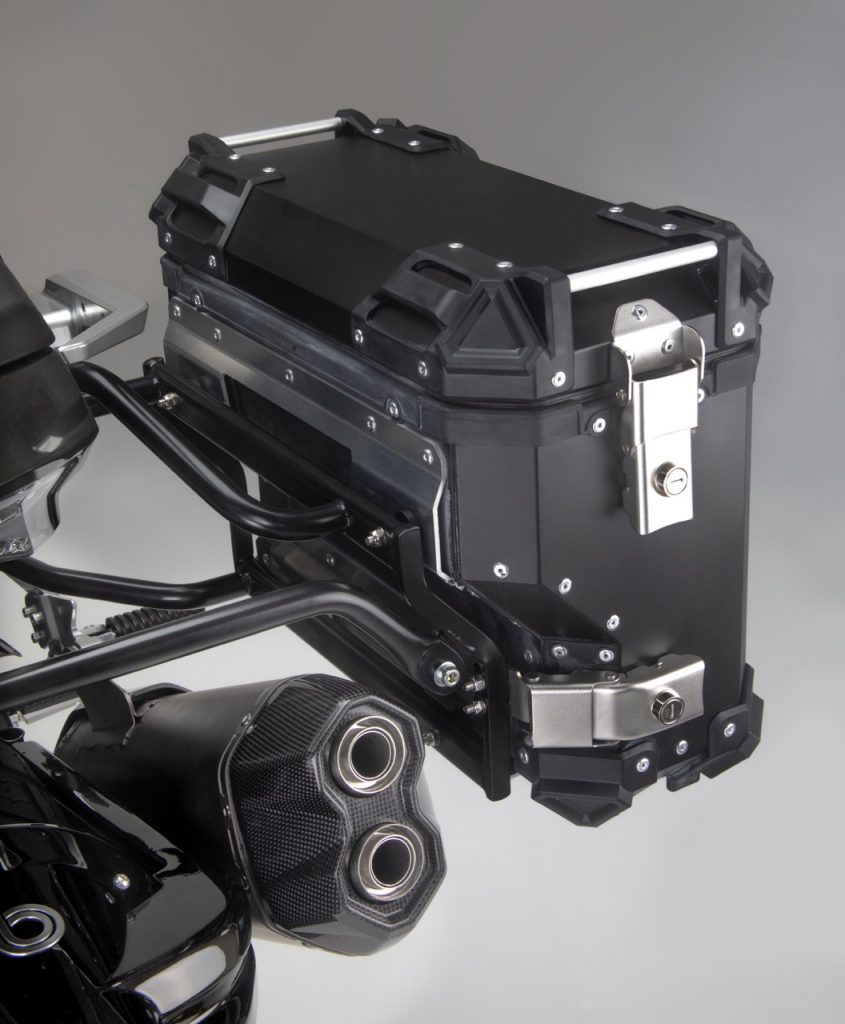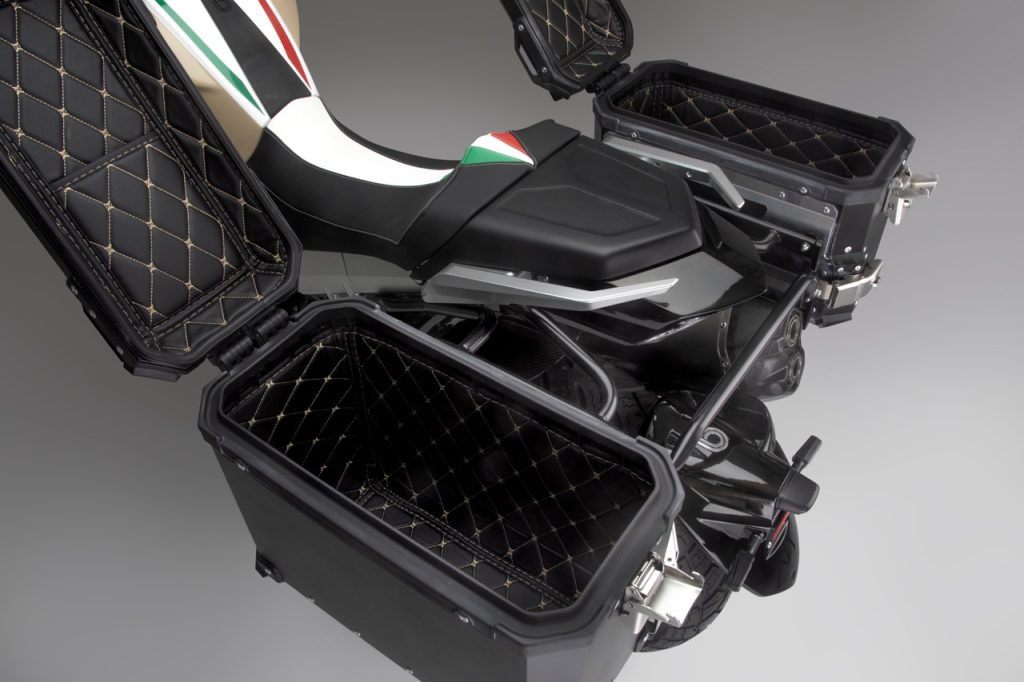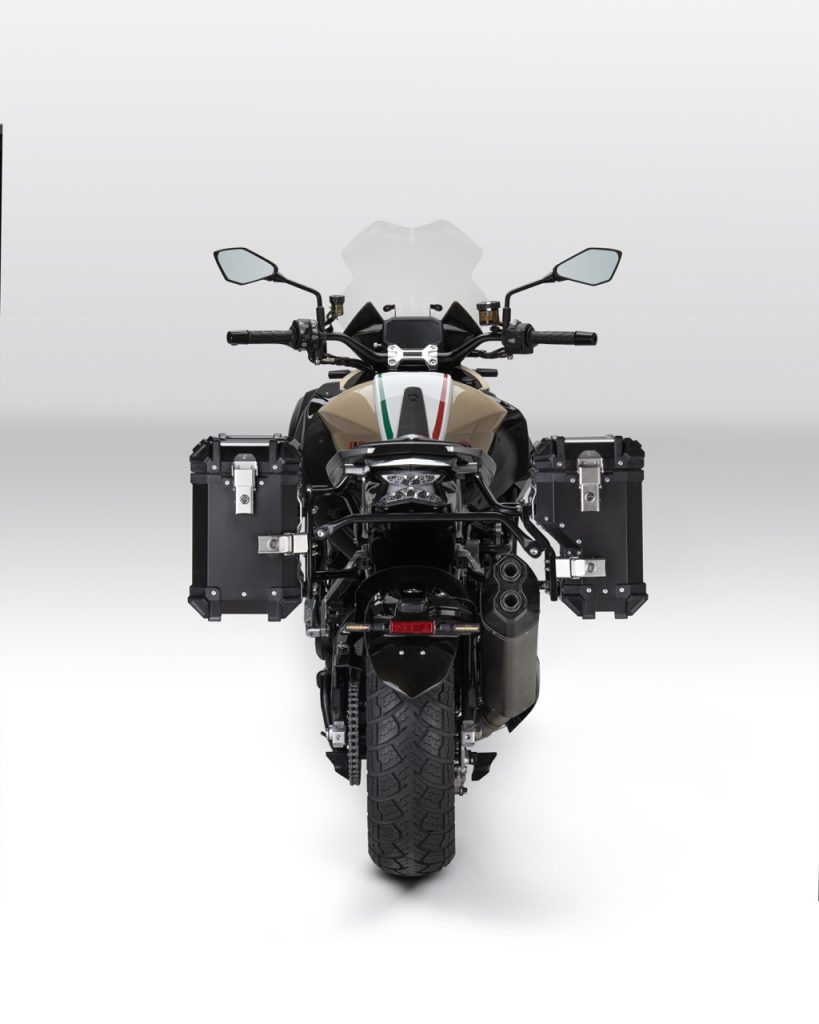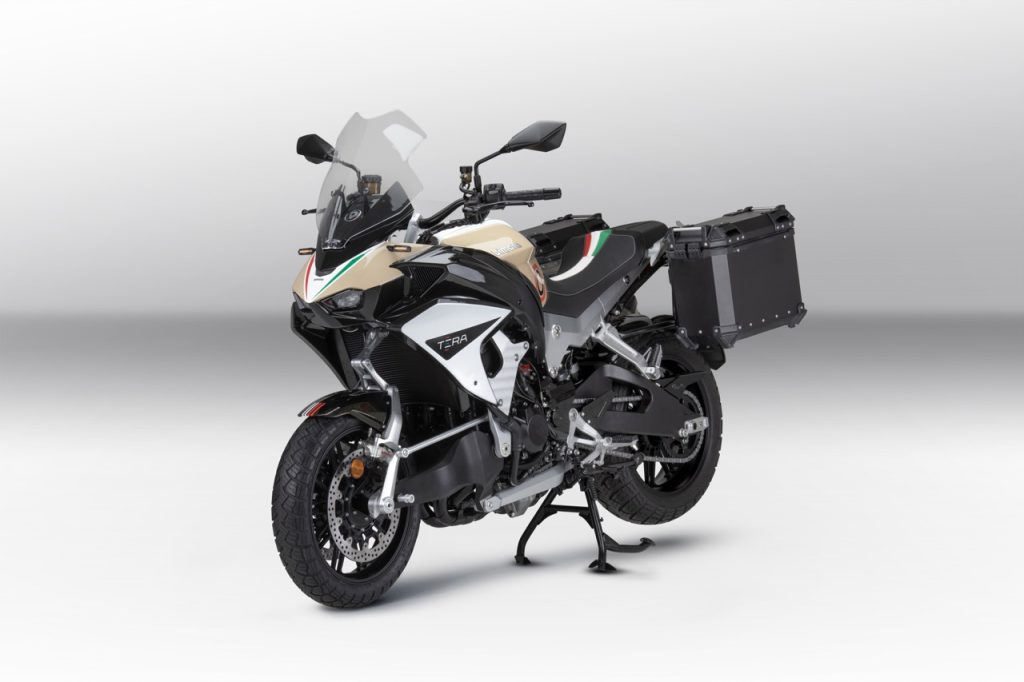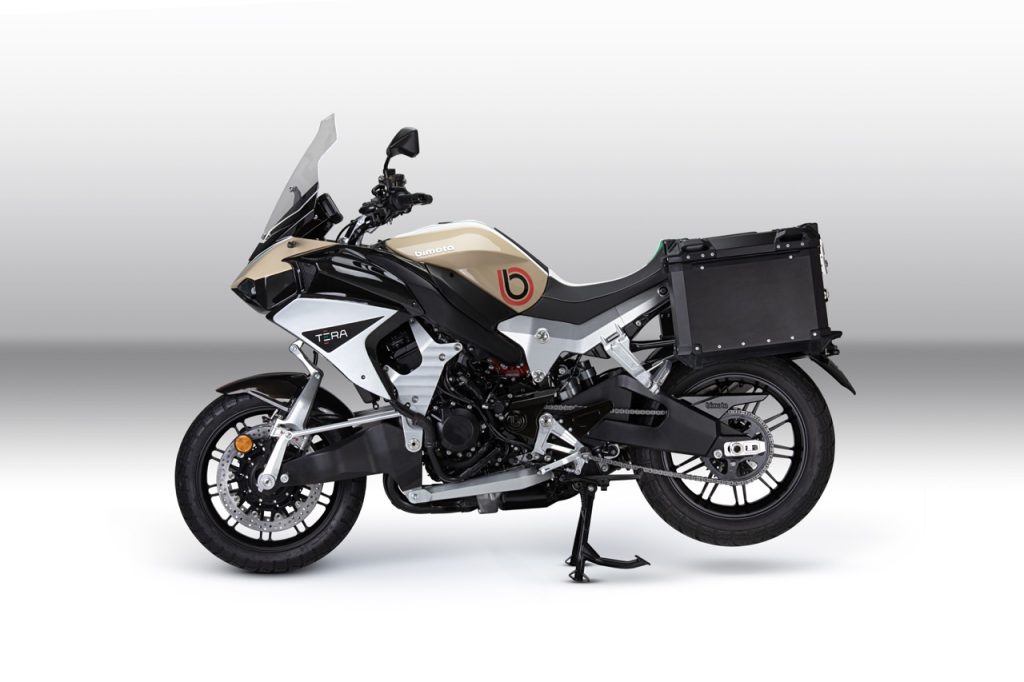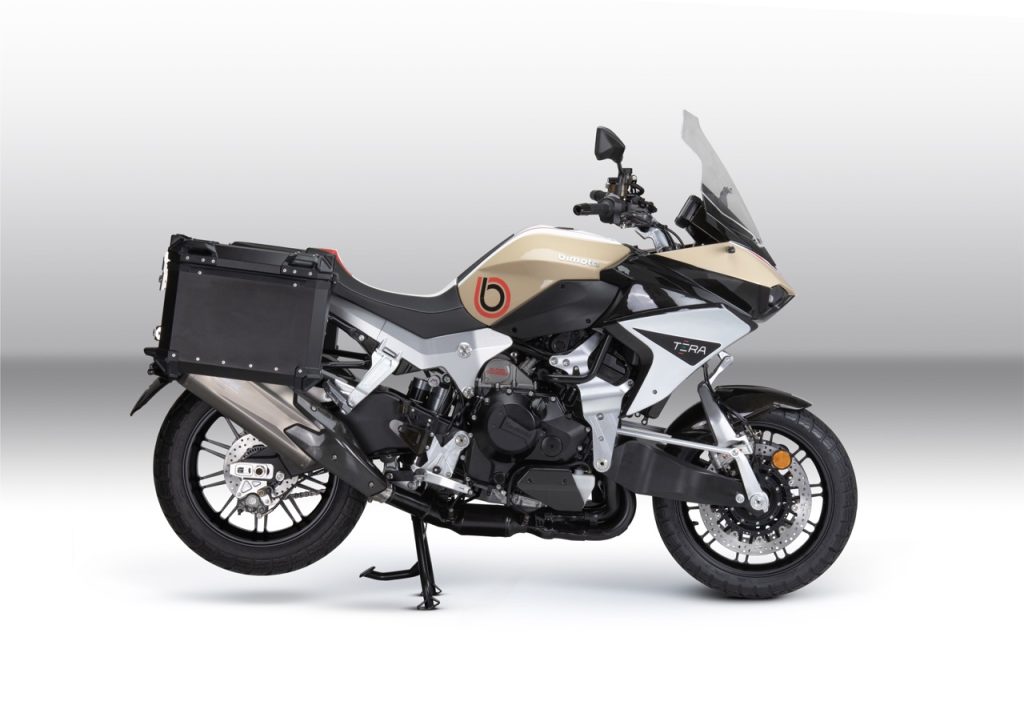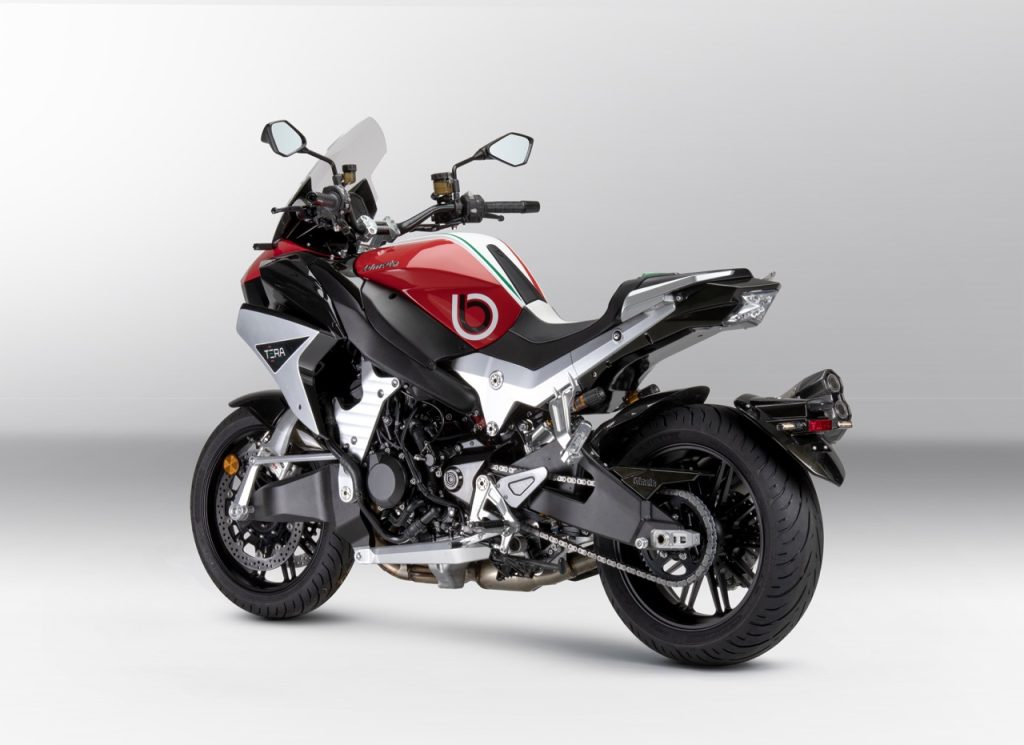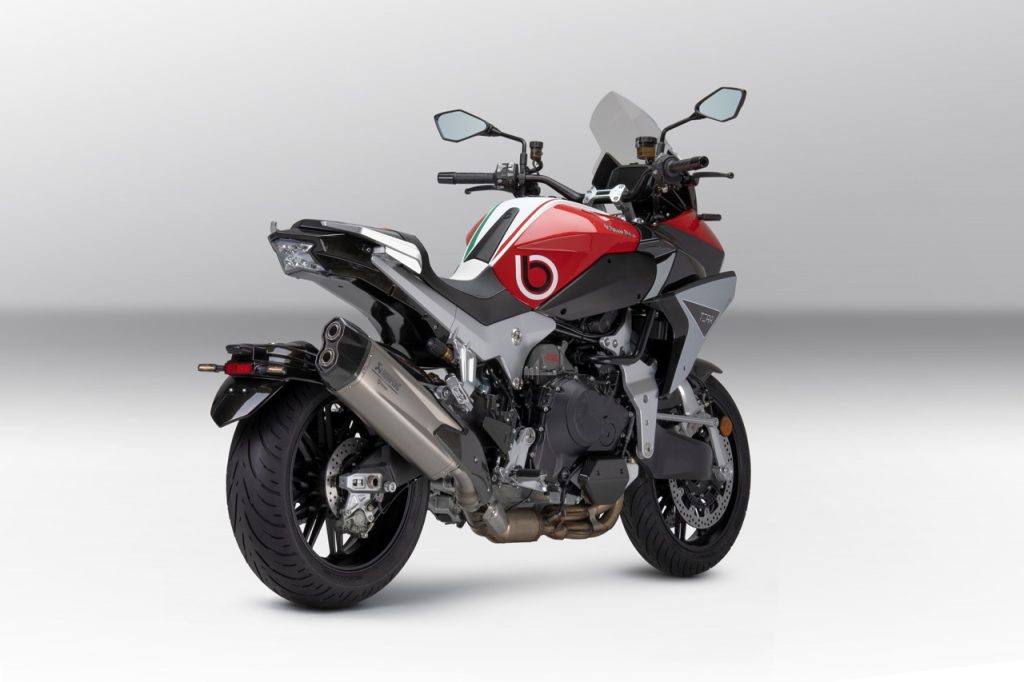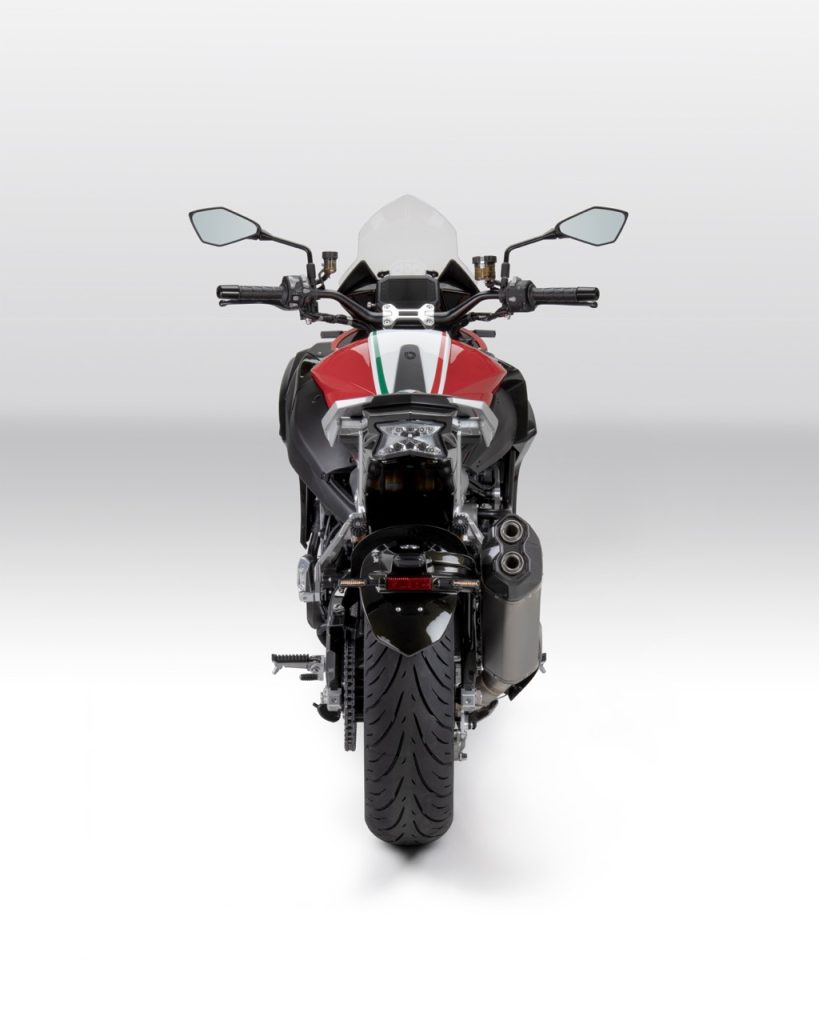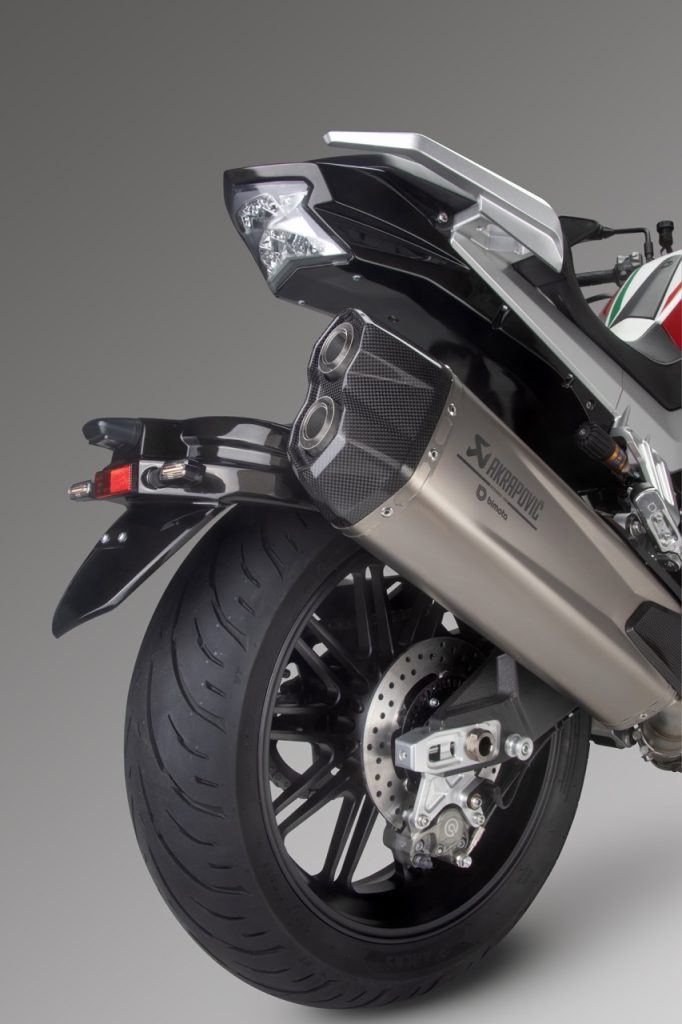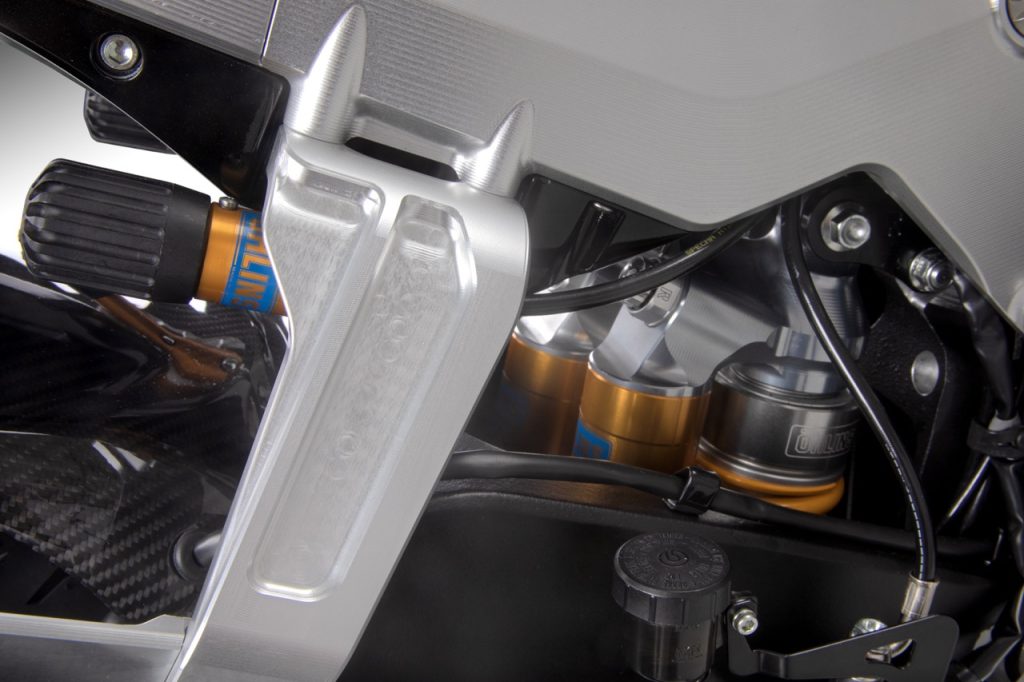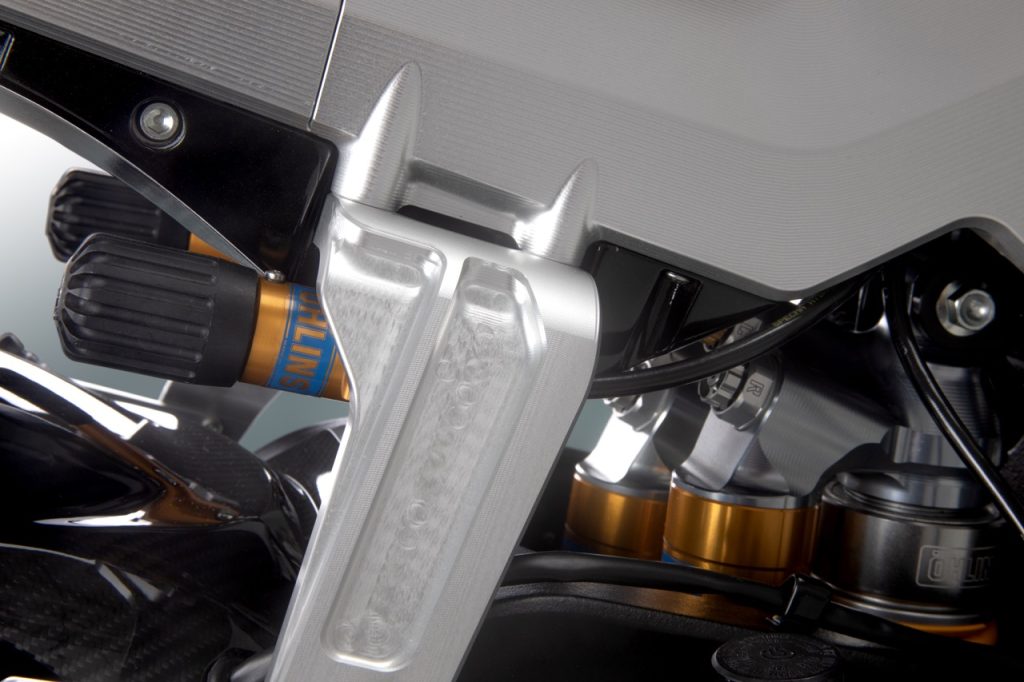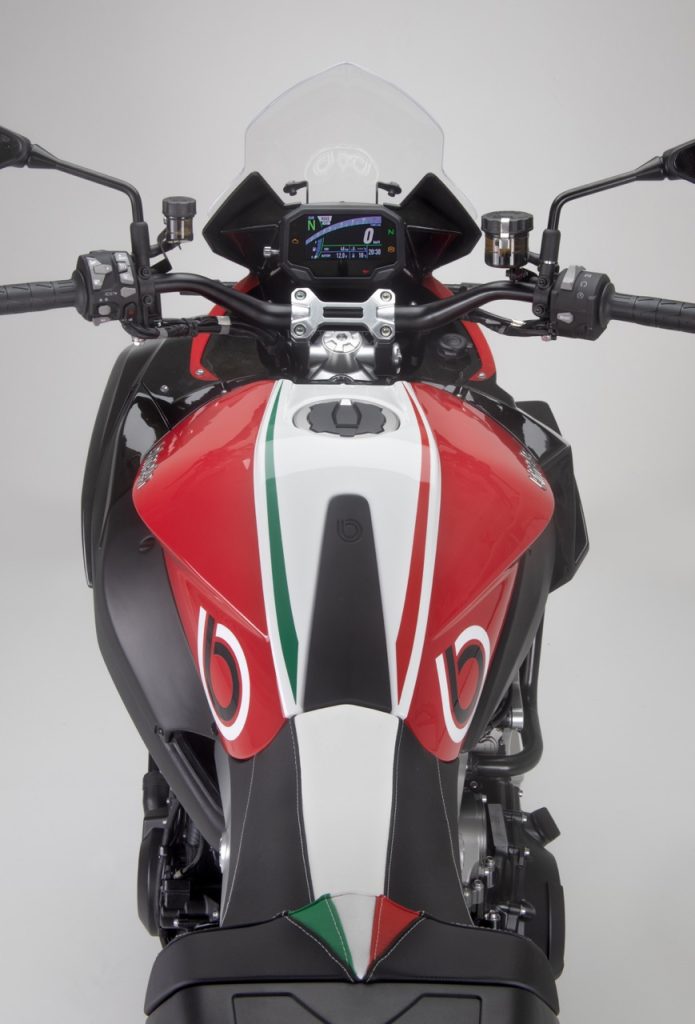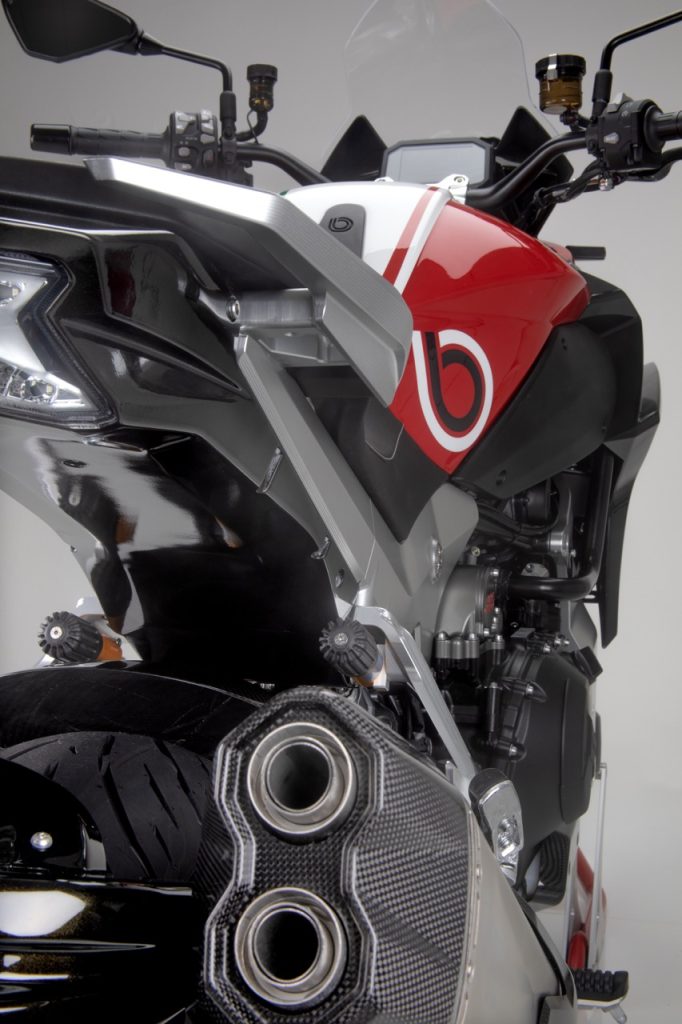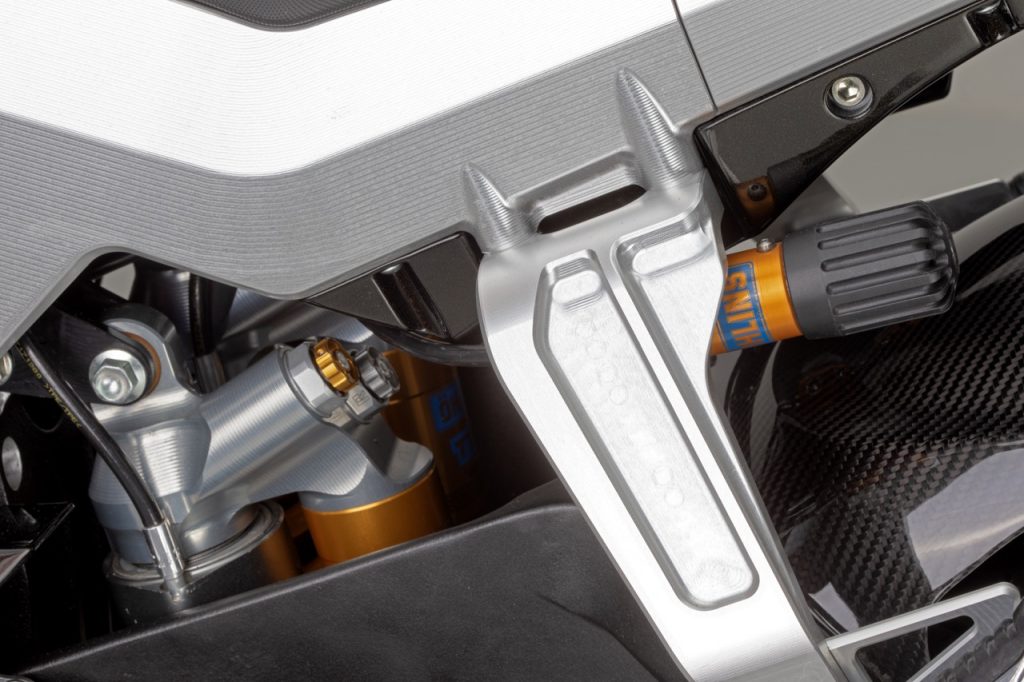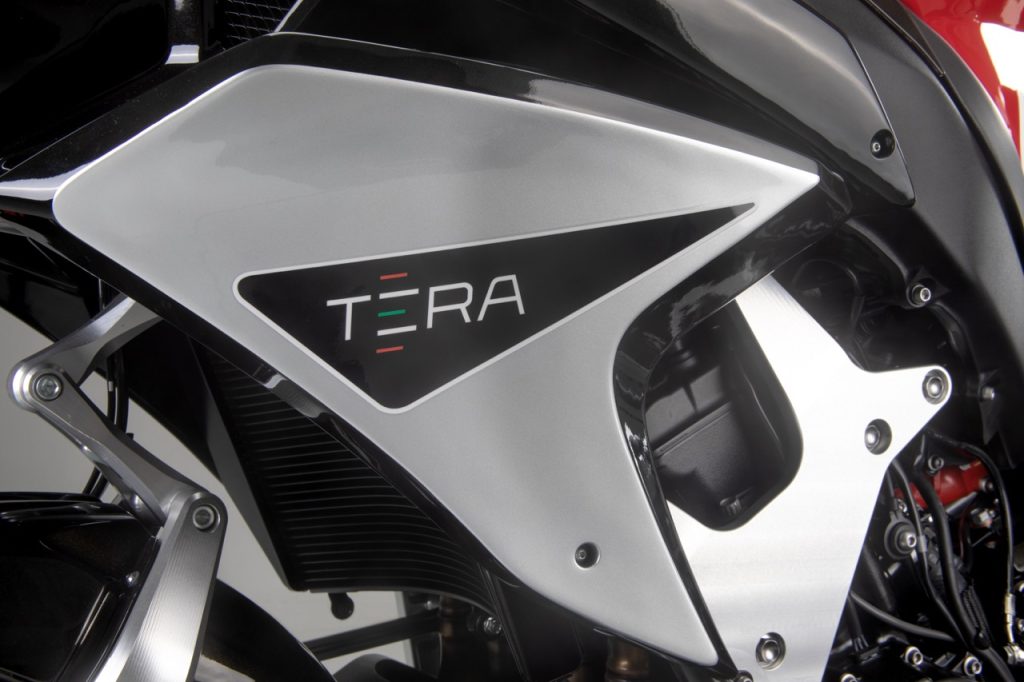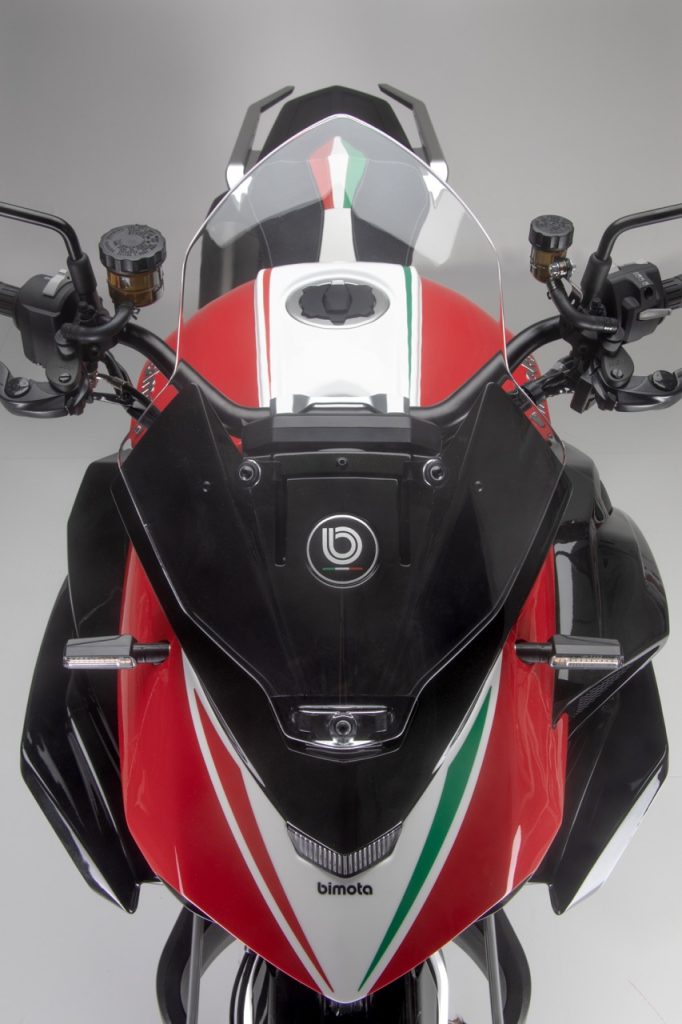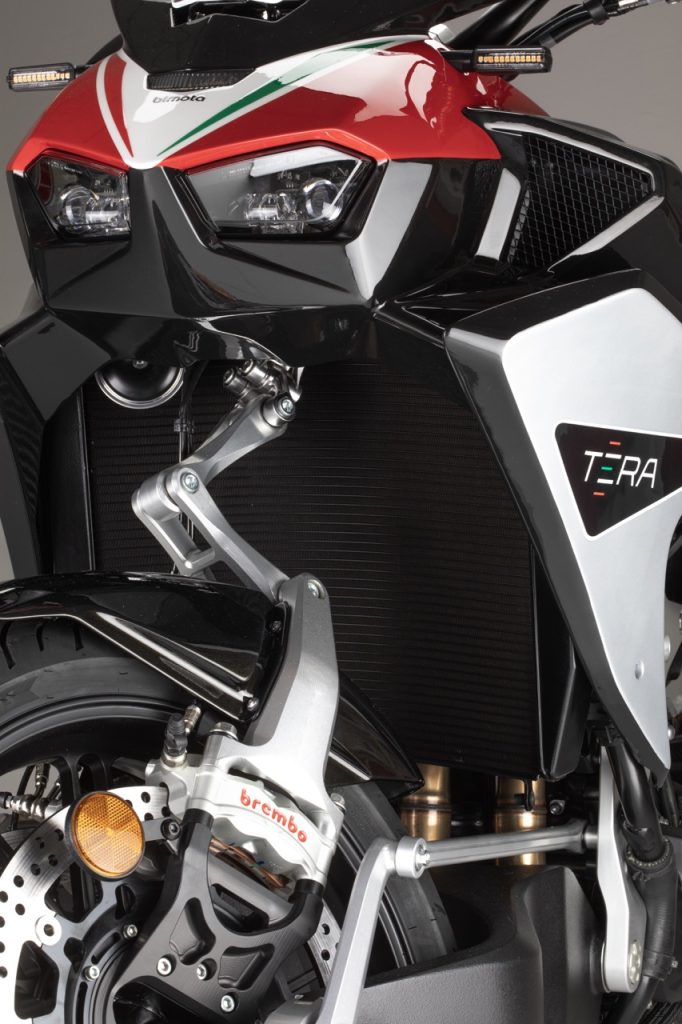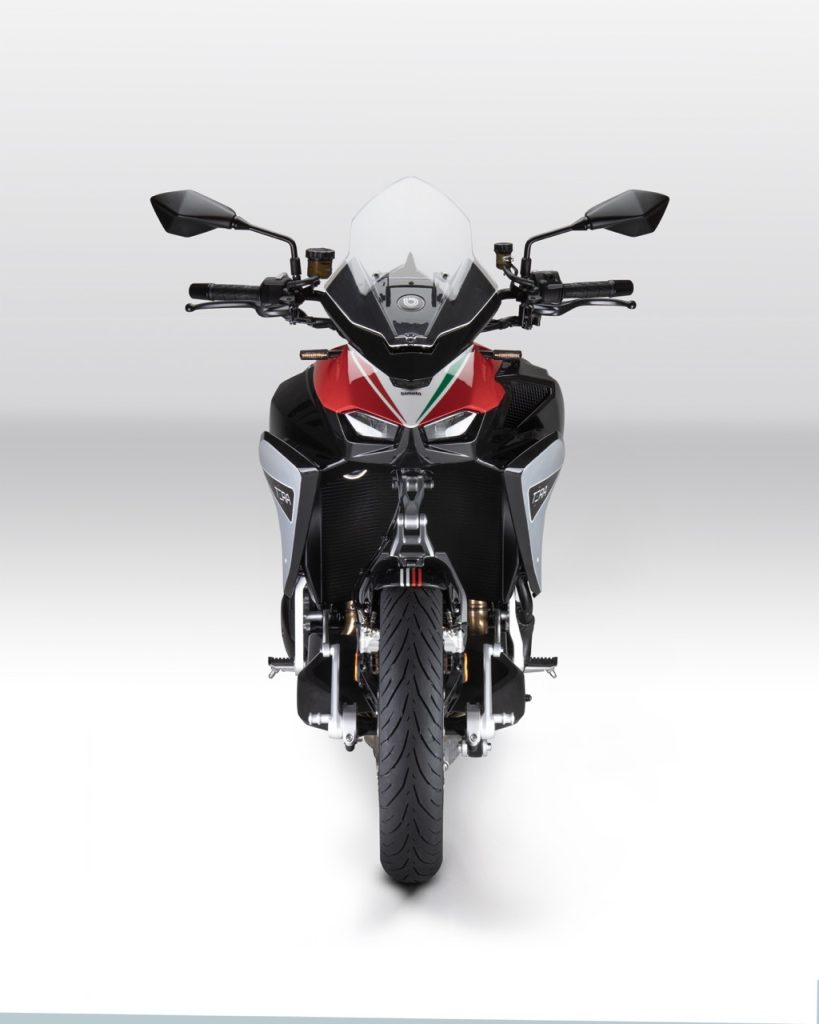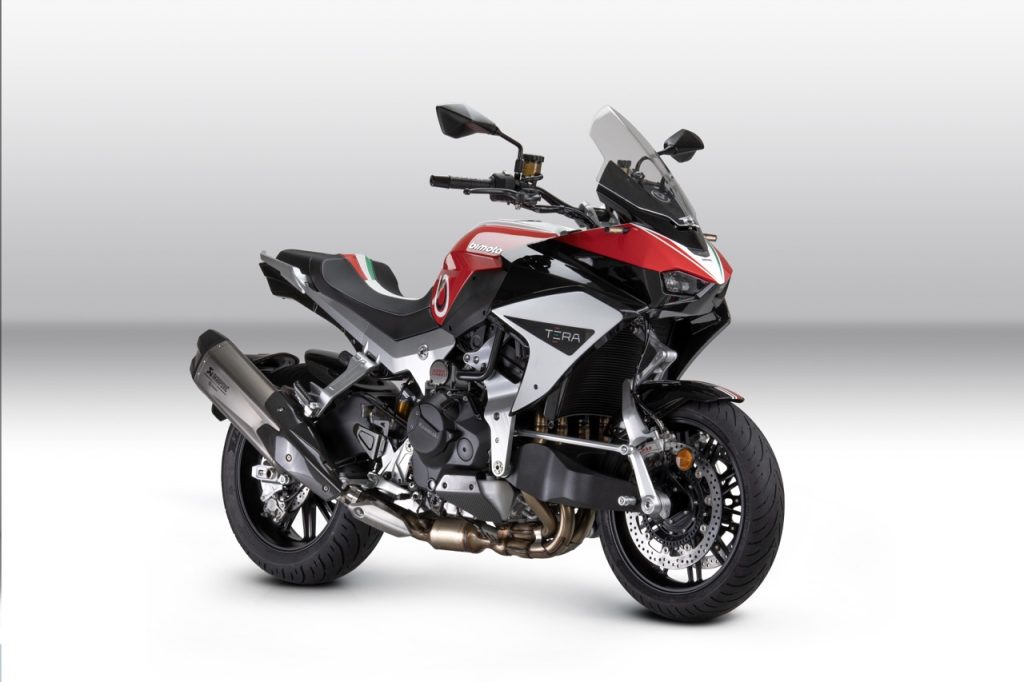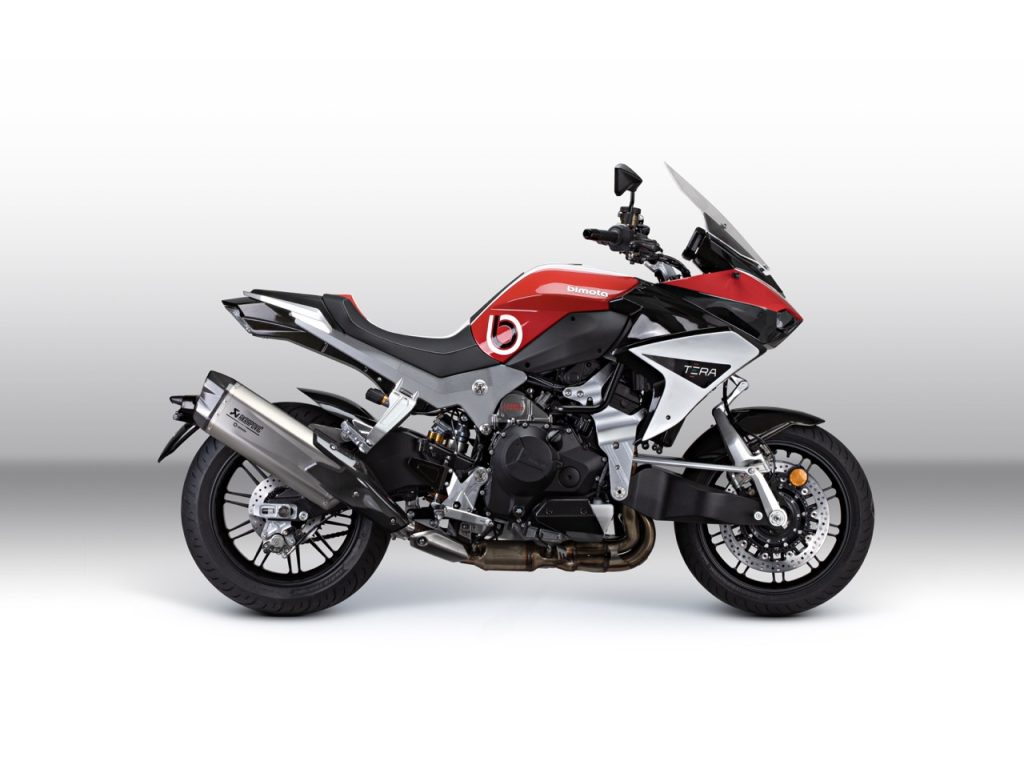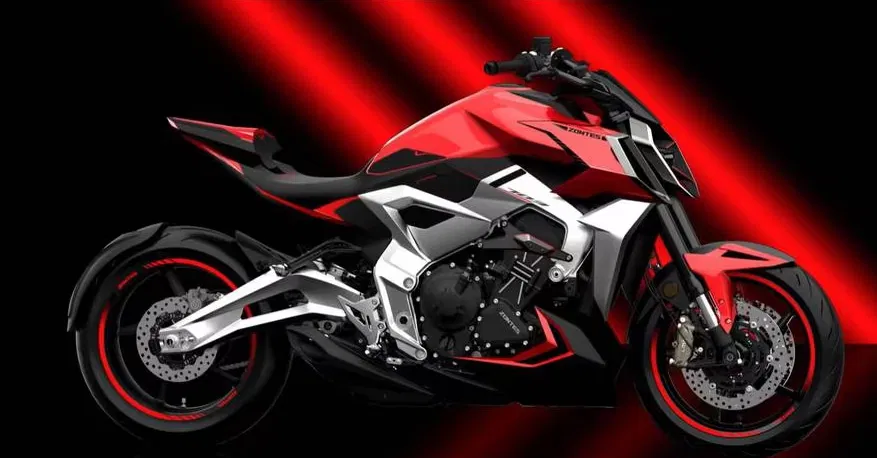In 2019, Kawasaki took full control of Bimota, marking a pivotal moment for the Rimini-based brand, which had struggled with financial instability for years. Under Kawasaki’s ownership, Bimota gained a solid foundation for future growth and stability.
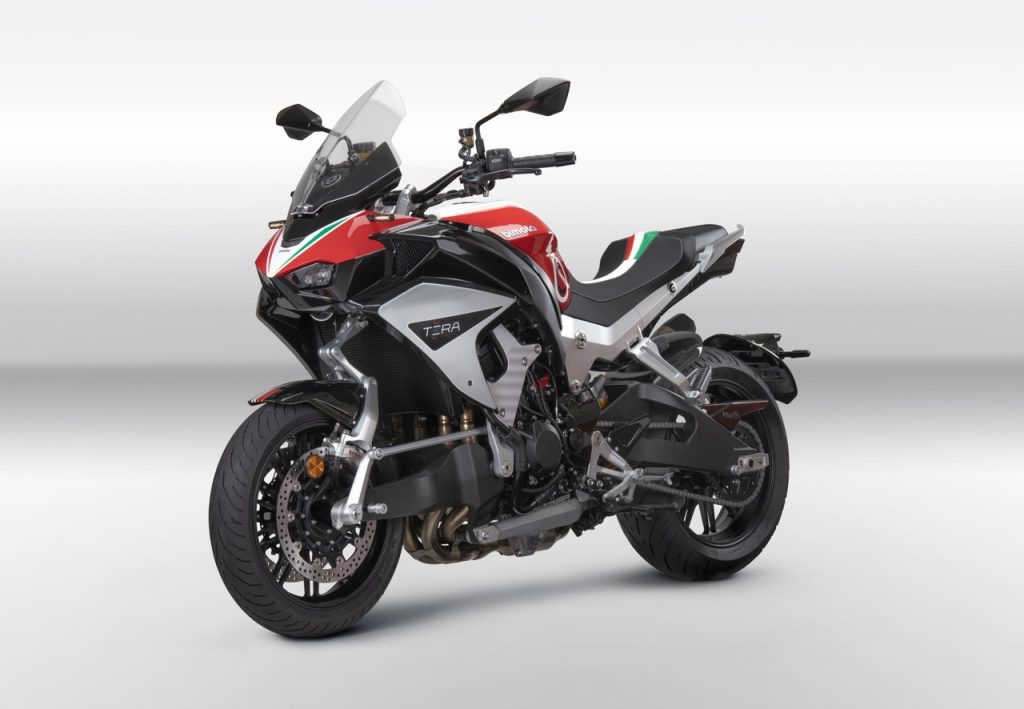
Bimota showcased its offerings within Kawasaki’s exhibit at EICMA this year, officially introducing the Tera concept (TEsi con Regolazione di Altezza, which basically means Tesi with adjustable height) in its final, production-ready form.
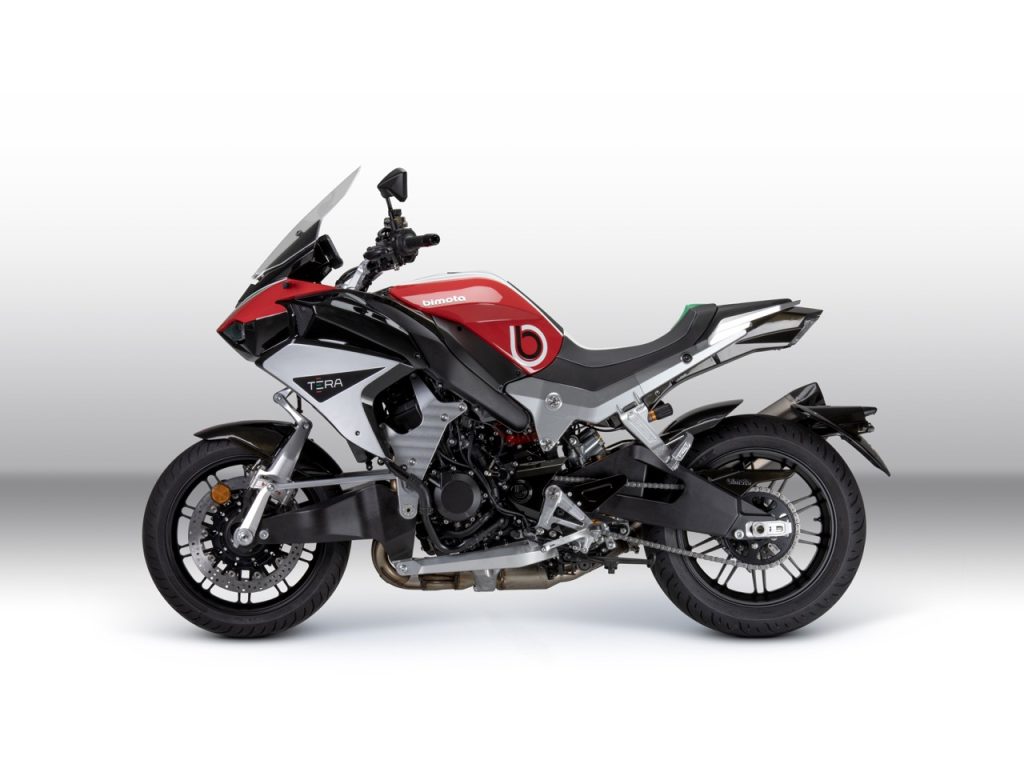
This unveiling marked the culmination of approximately three years of development, with the unique and patented front end first presented independently a year prior. The Tera represents the latest evolution of Bimota CEO Pierluigi Marconi’s renowned Tesi chassis, including the renowned hub-steer front end which Bimota is so well known for.
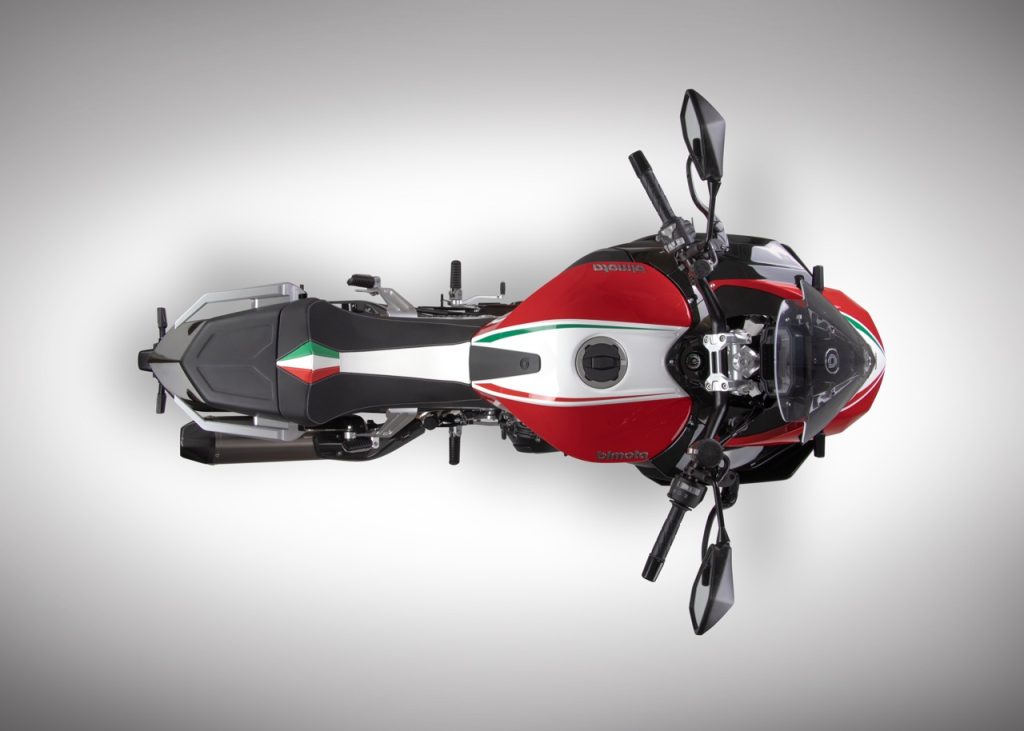
The Tera steering system was designed to address the range-of-motion limitations inherent in the original Tesi design, particularly during tight turns. Unlike its predecessor, where the steering is confined within the front wheel hub, the Tera design significantly enhances side-to-side steering range to 35 degrees—16 degrees more than the Tesi H2.
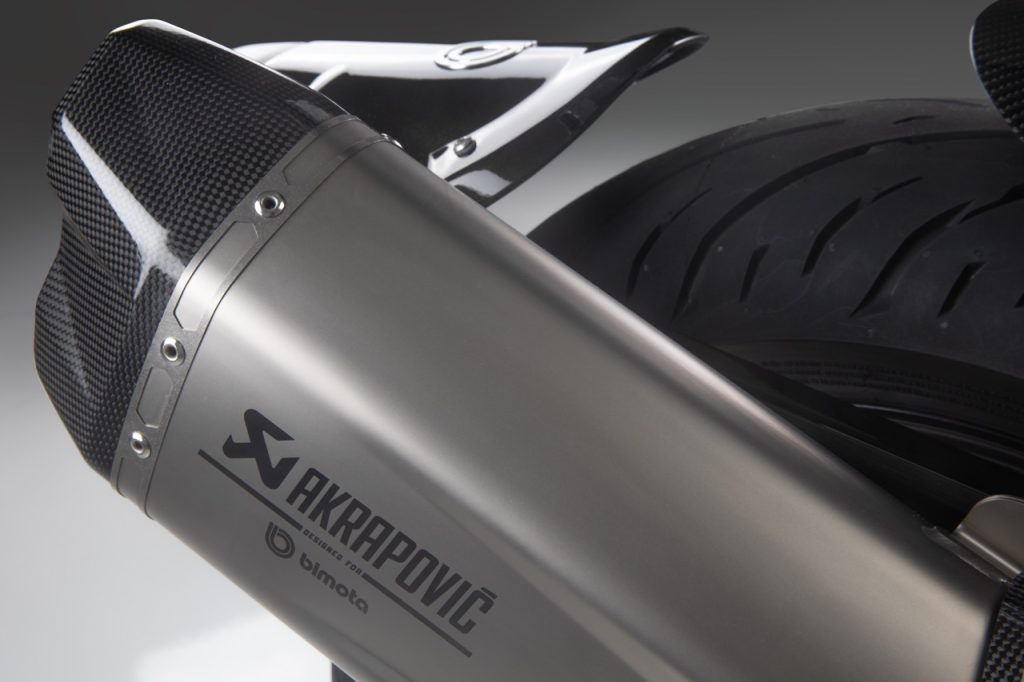
Bimota’s patented front suspension-steering system retains the advantages of the original Tesi, including an anti-dive effect and a reduction in unsprung masses. The steering mechanism involves a knee-type link activating the shock absorber within the steering head. Aluminum arms with reaction rods ensure precise vertical movement, connecting to the front wheel through machined billet plates that also house the front braking system’s calipers.
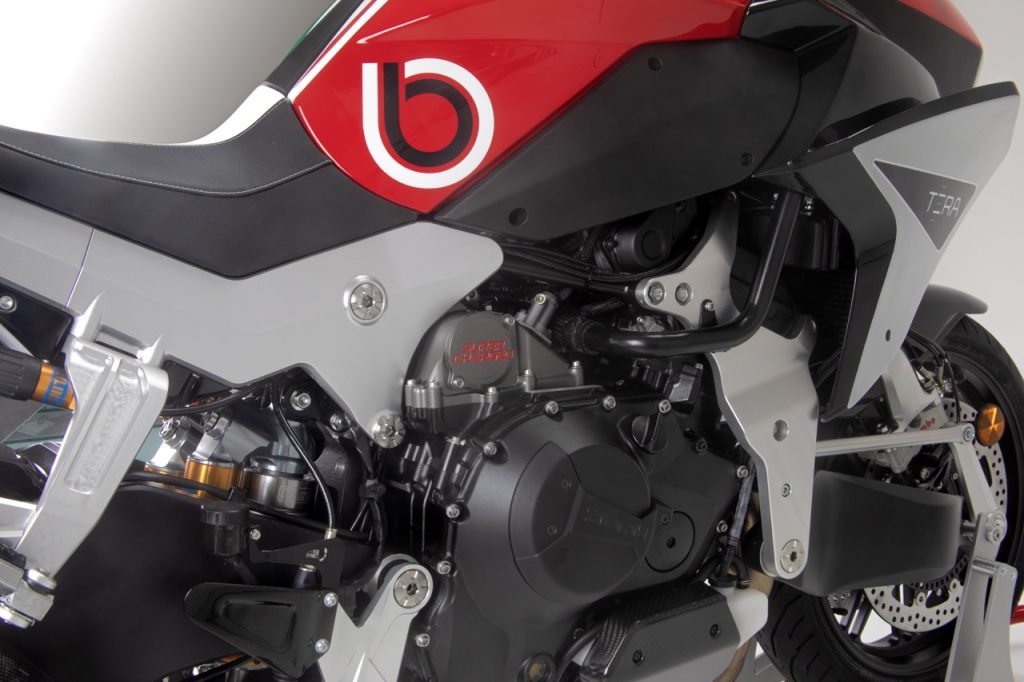
A notable feature of the Tera concept is the ability to adjust the center of gravity height by 30mm. The chassis’s front section comprises two machined billet-aluminum plates and a short steel-tubing trellis structure housing the steering head, with the engine serving as a stressed member. A connecting arm links the front frame to the rear swingarm/shock’s pivot point and the engine, forming a lightweight yet rigid structure capable of accommodating the supercharged inline-four Kawasaki H2 engine, boasting 200 hp at 11,000 rpm and 137Nm of peak torque at 8,500 rpm.
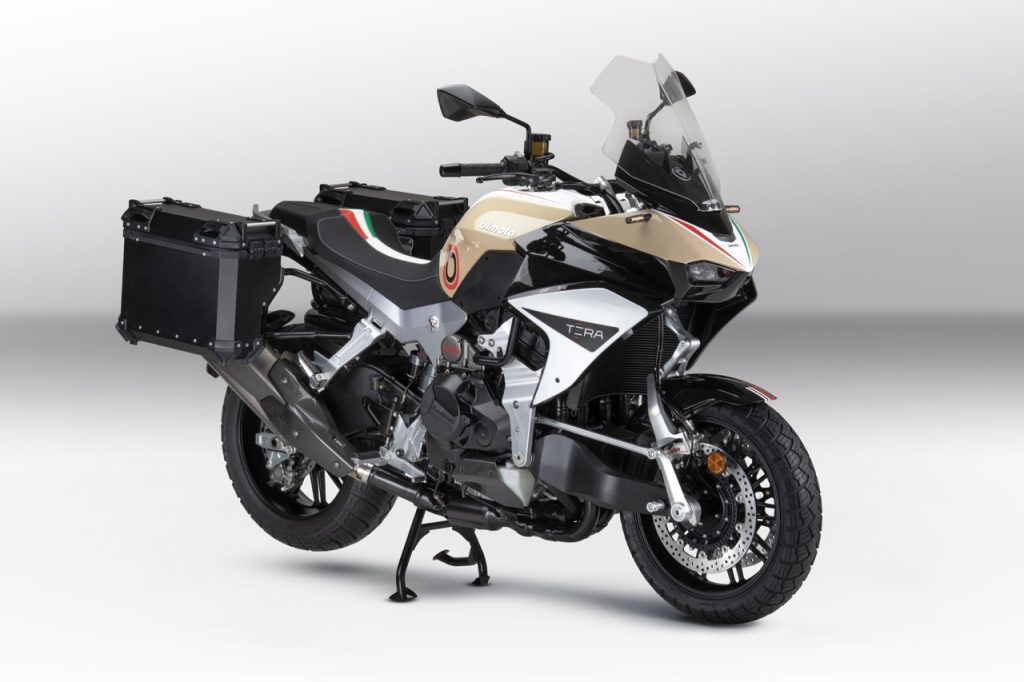
While specific front-end geometry details are yet to be released, the Tera features a compact 56.9-inch wheelbase, comparable to Aprilia’s Tuono V4 Factory and notably shorter than other street-oriented adventure bikes like Ducati’s Multistrada V4 RS which measures in at 62.7 inches.
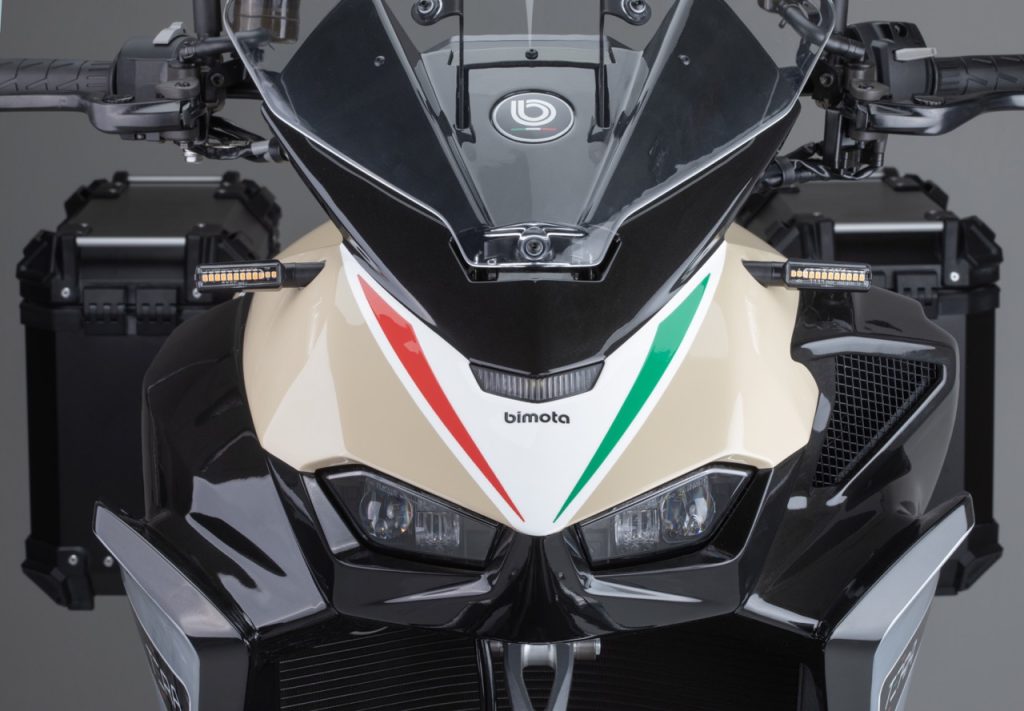
Wheels are made up of 10-spoke forged magnesium wheels (17 x 3.5 and 17 x 5.5) fitted with 120/70-17 and 190/55-17 tires. The braking system comprises Brembo four-piston Stylema calipers and 330mm discs at the front and a twin-piston caliper with a 220mm rotor at the rear, supported by Kawasaki’s KIBS ABS system.
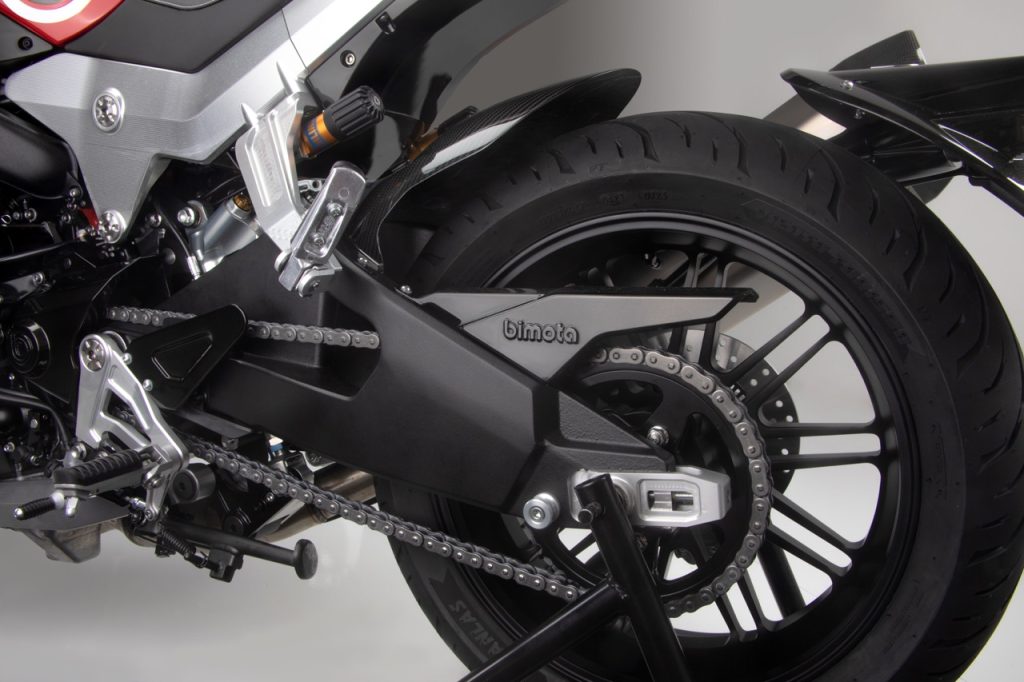
In terms of electronics, Kawasaki provides a comprehensive suite, featuring cornering ABS, traction control, four ride modes, and cruise control. A full-color TFT display serves as the central hub for viewing and adjusting settings, as well as providing essential bike information.
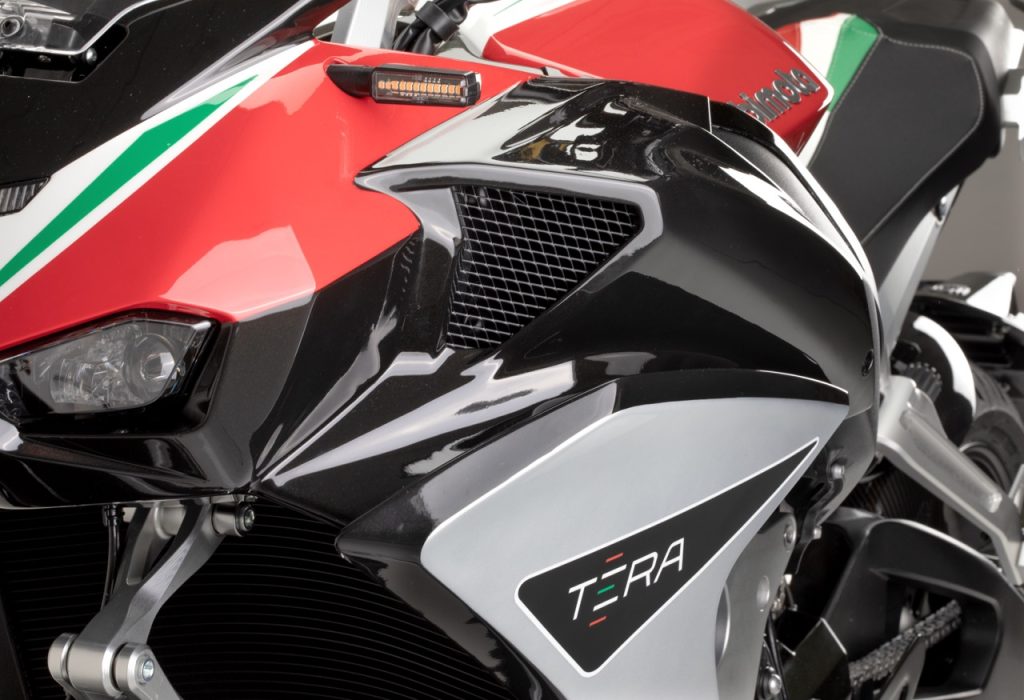
Positioned as a “crossover,” the Tera combines superbike-like performance from its engine with an upright and comfortable riding position. Bimota’s innovative chassis construction, coupled with the use of lightweight materials, contributes to an impressive curb weight of just 200kg.
There is no info yet on a release date.
